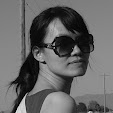[IRAN] Esfahan - Chehel Sotoun

Chehel Sotoun was built as a pleasure pavilion and reception hall by Shah Abbas II and completed in 1647. The name, meaning “Forty Columns” in Persian, was inspired by twenty wooden columns supporting the entrance pavilion, which when reflected in the waters of the fountain, are said to appear to be forty.

The outer walls of Chehel Sotoun.

Opening hours is 9am to 4.30pm and entrance fees is 150,000 rials.

At the far end of a long pond stands the Chehel Sotoun palace.


The other end of the long pool.



After the hall, there exists eighteen columns which added to the double extra columns at the beginning of the hall make a total of twenty columns.


The Mirrors Hall is located at the entrance of the main hall of the palace. The name of the hall originates from its multiple mirror works including big full length mirrors and small colored ones with different geometrical shapes at their margins.

The palace contains many frescoes and paintings on ceramics. The upper walls are dominated by historical frescoes on a grand scale, portraying court life and some of the great battles of the Safavid era.


This painting shows Shah Abbas II’s reception of another Turkistan ruler, Nadr Mohammad Khan with musicians and dancing girls.

These painting works survived the 18th century invasion by the Afghans, who whitewashed the paintings to show their disapproval of such extravagance.


Tourist going to great length to take photo inside the palace.



This painting shows the karnal battle between Nader Shah Afshar and Mohammad Shah Gurkani, king of India.





Other items are kept in a small museum.


Tile frame of Shah Abbas I and Abdol Momen Khan Assembly.



On the outside of the building, there are some particularly interesting pictures of European figures, presumably based on ambassadors and their retinue who would stayed in the palace from time to time.



The palace’s garden is an excellent example of Persian garden form and was recently added to UNESCO’s World Heritage list.


Next, I'm going to visit Vank Cathedral. It's the only church I visited in Iran.




![[MALAYSIA] How To Do A Self Guided Walking Tour in Kota Kinabalu](https://blogger.googleusercontent.com/img/b/R29vZ2xl/AVvXsEgR_cJjX4Shl9rsz0ufzxjmtLMq5PAvmTNDHypSVV2CYDaarZVj8EMznRkXqdVeCGg2yEMdFqPtI5rvrmMtJVSL1W9jqOtdCM2EFAc5ZTWn7XzPQV5sqS4s1DO0T_AuF0nq_dLQ53b9-ju3yyLJUrvU2TlhbmD4rDDV5-aPFaT2WEQZ1c257JXGUhyfsw/s72-c/20220524_131141.jpg)
![[FRANCE] My Favourite Paris Eiffel Tower Photo Spots](https://blogger.googleusercontent.com/img/b/R29vZ2xl/AVvXsEi220KHLfBDpyO53KorHwAb0KQEuiiaVDlrFYwEEAvs8YvKb-Edmyt7Hl7rZszN6qc-GM4e3SmjBS2pUiCiv8ljl8mnrUR93Ljxb0xGrSZ4sZLPRErpbAj29btKvnIC67xV93iKnrH3QRcc/s72-w781-c-h505/DSCF4372.JPG)
![[JAPAN] Osaka Universal Studio](https://blogger.googleusercontent.com/img/b/R29vZ2xl/AVvXsEilW88BKY24KkvC4WjRfTktmxFmylxMsDD8emYT93x8bOlgqzMV1feAp28Si_GPn3hyFD2E97CMmP3X6kceDfFa9WB_7qr2BFvmu20iVJRaNlZd1BfoyUUj5ZgofOgK5lZGoqVDS4-1YLTo/s72-c/?imgmax=800)


![[MONACO] How To Visit Monaco In One Day From Nice](https://blogger.googleusercontent.com/img/b/R29vZ2xl/AVvXsEgZkJeVAOmz4LTRwY2uDTK131UJVUWH_44GUUU3H-ni63dK2BlNqITBIh5Tdcpz9kXTUb7ePW7f-PQ1Y7E6B4lnqKEHs_nL3Eop-ouoFhxayMI4lNCcUG-oJnGMVwpGDlBu8lfgn10H_QHw/s72-c/DSC06605.JPG)

![[MOROCCO] My Day Trip to Blue City of Chefchaouen From Fez](https://blogger.googleusercontent.com/img/b/R29vZ2xl/AVvXsEh-7PIqgkIbF1BtTIOwfZ2R611OUrvV7f4Uxih57is62V_QD_DySCdifgR250MMruySrRmV7UMQ14iRsQZ6ifAaAWTqYacWSu__Lpm6QuqEjUcMZ4IJz-0SLDKeCV-nn6Zk1qbyMtMaZf4YupMArl4gXmmXoQUxHc6T-_eW-X2jvjh47rlu4Ddq4_Q48g/s72-c/DSC07946.JPG)
0 comments: